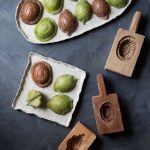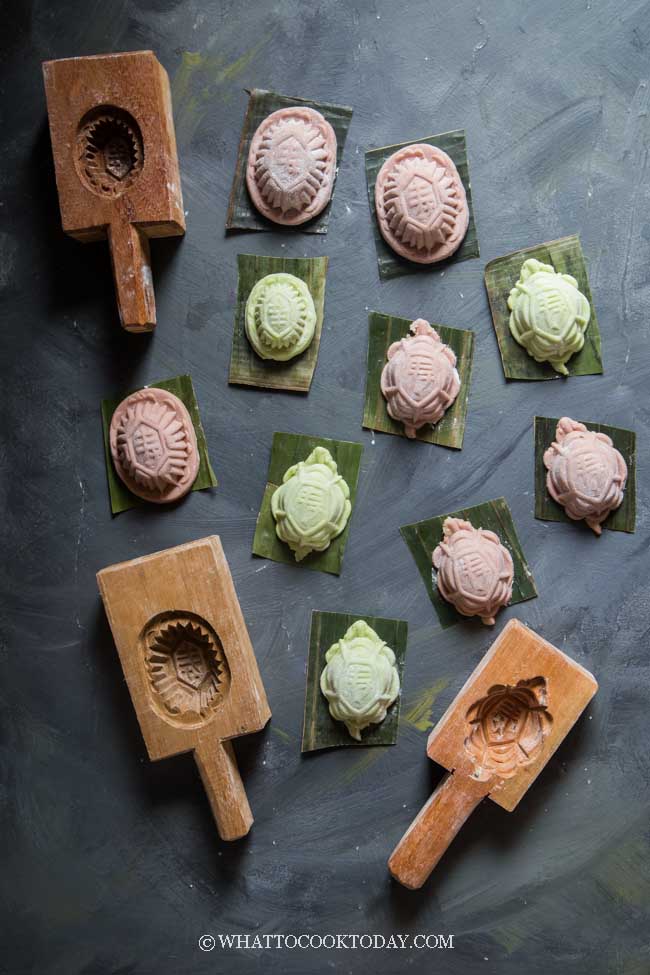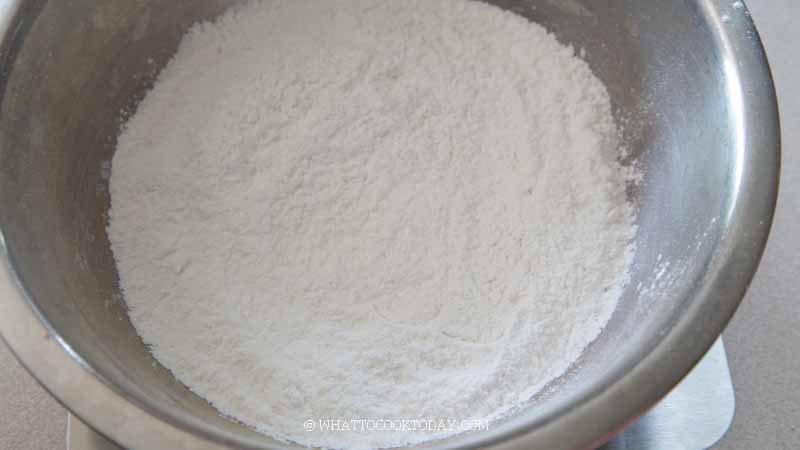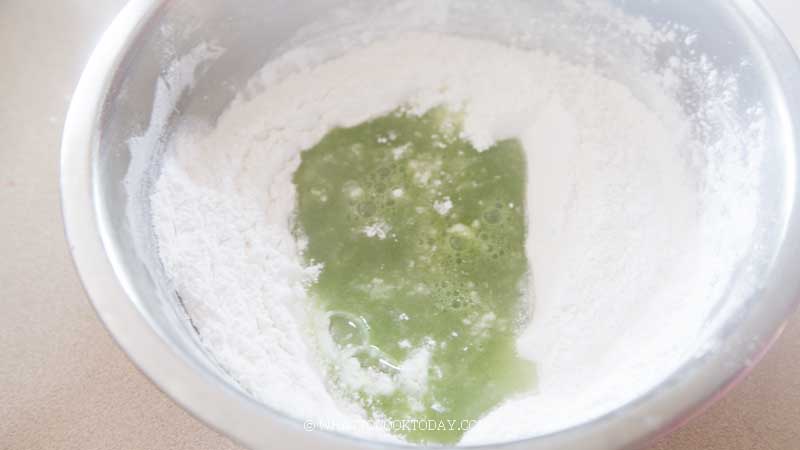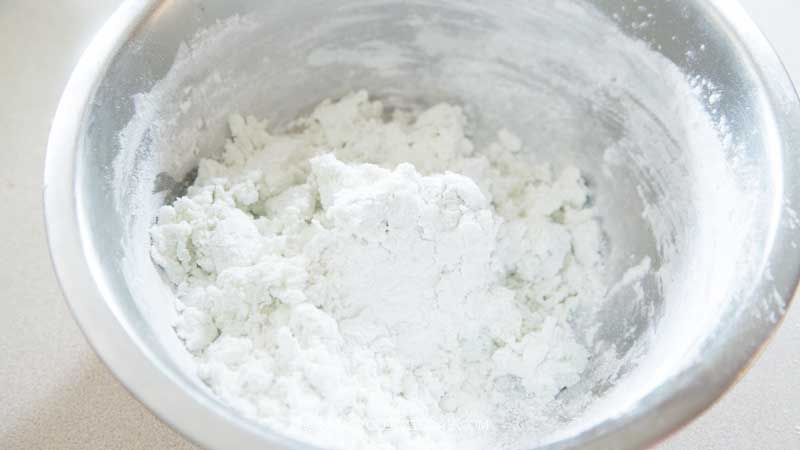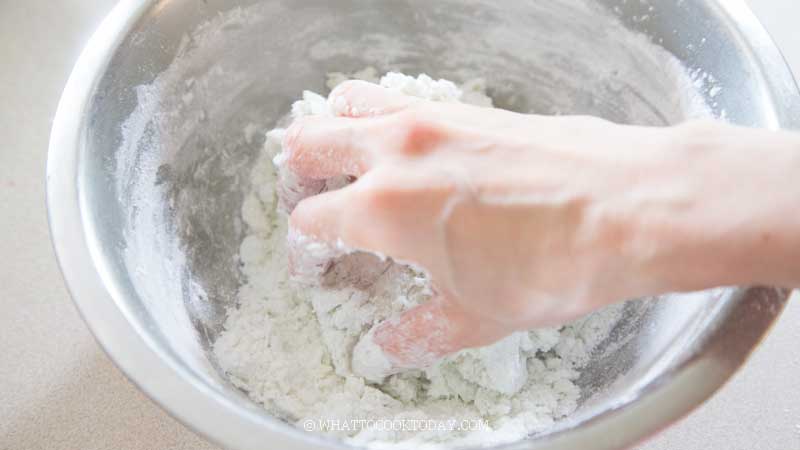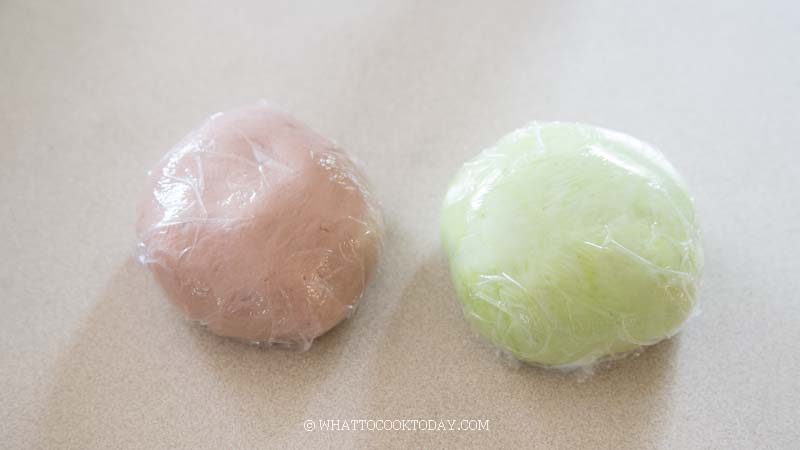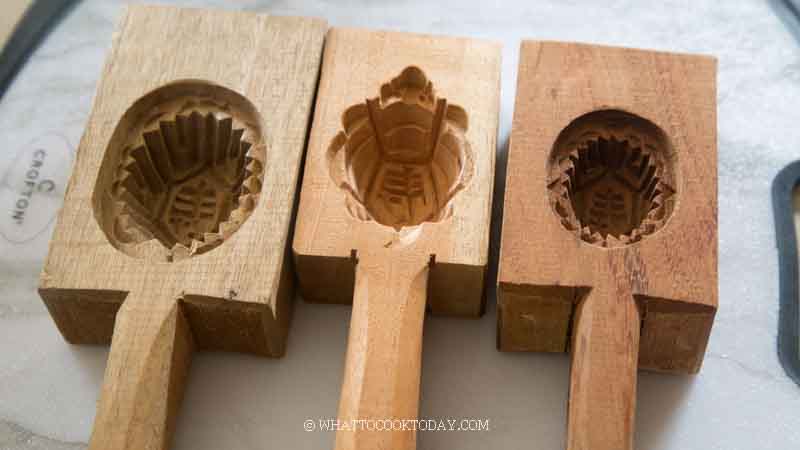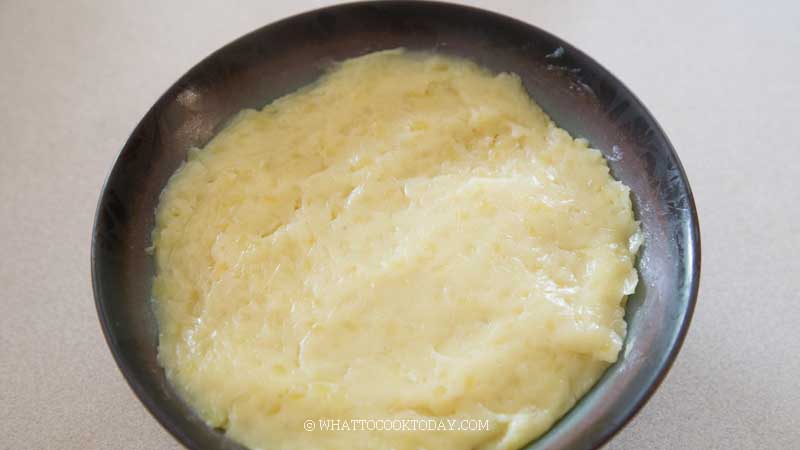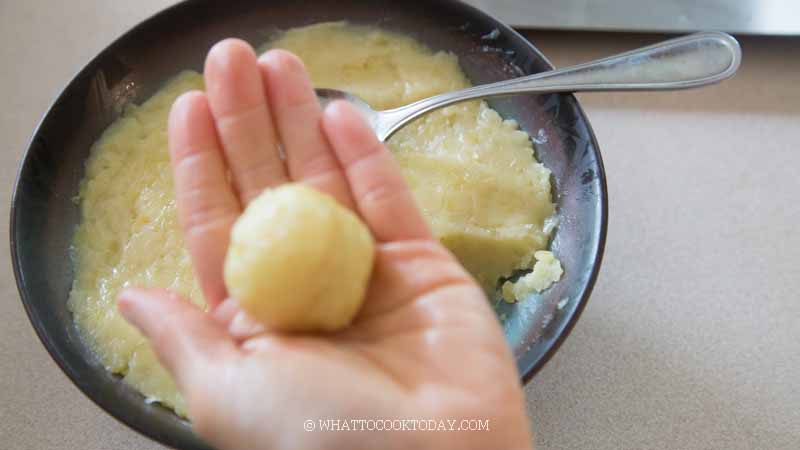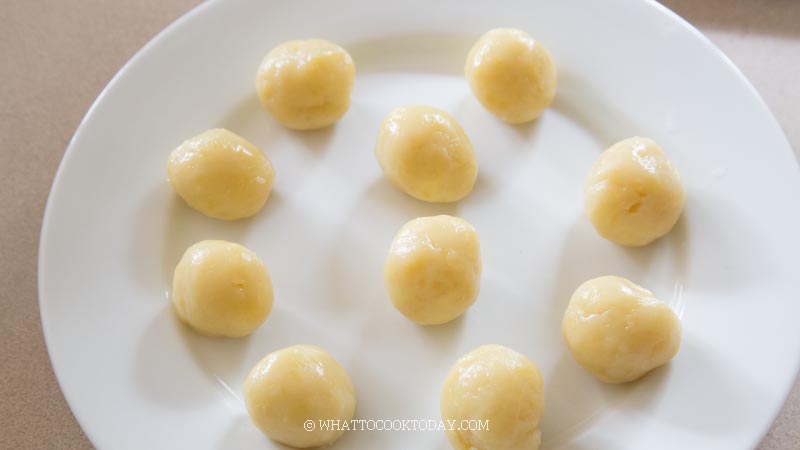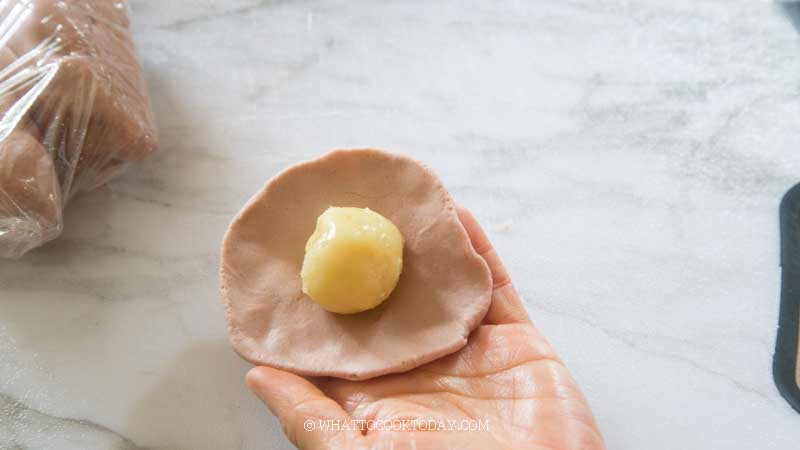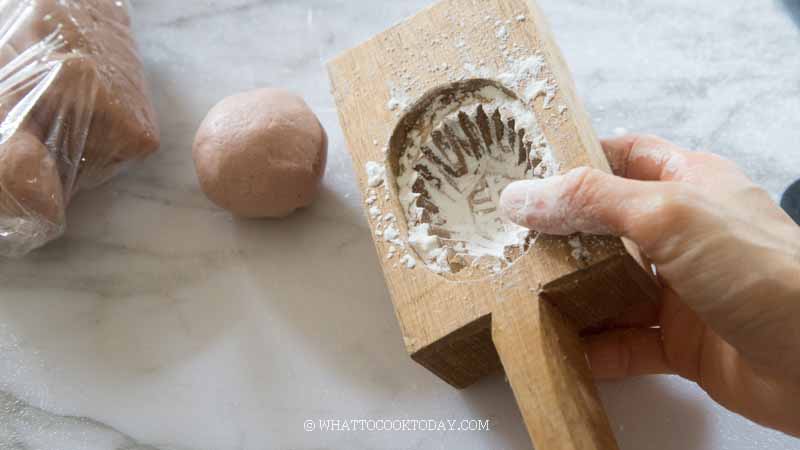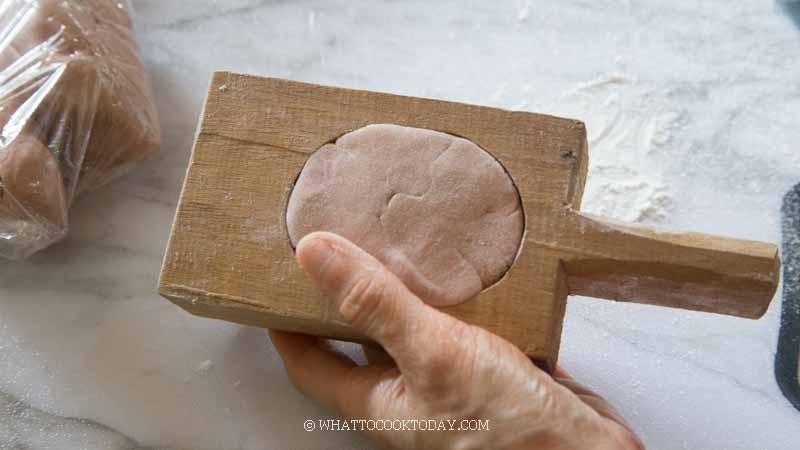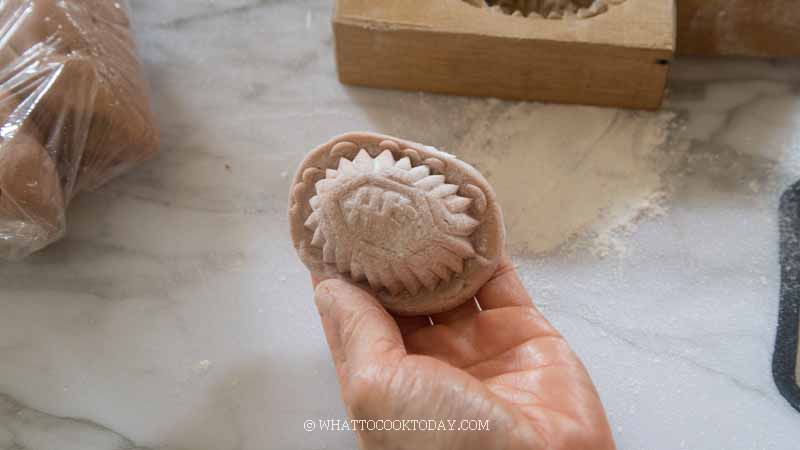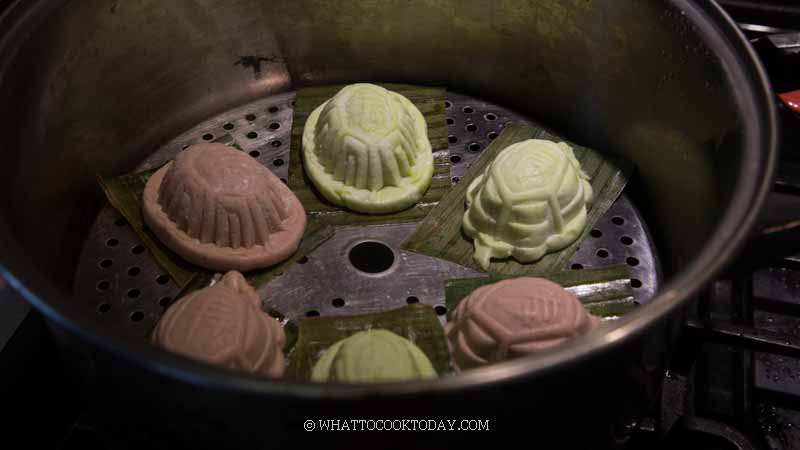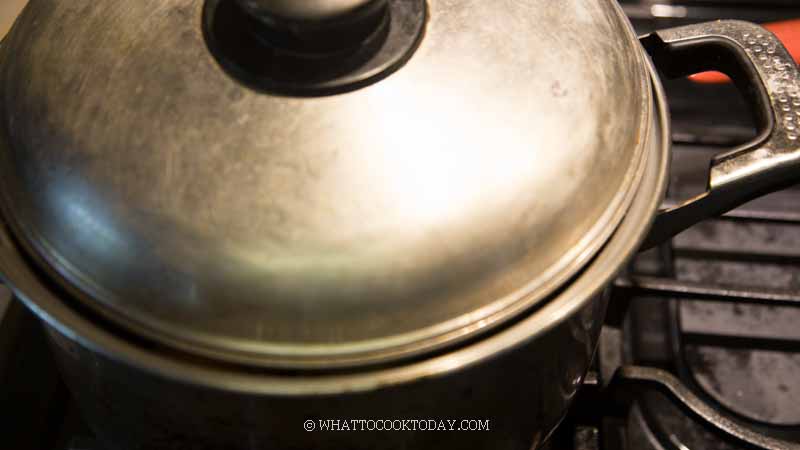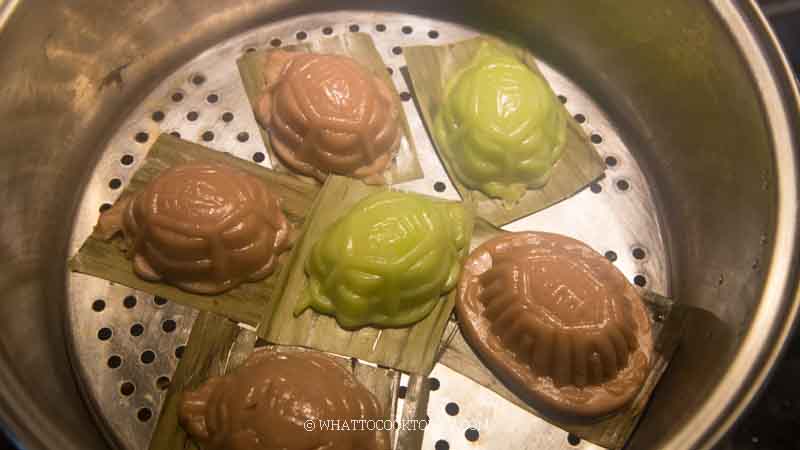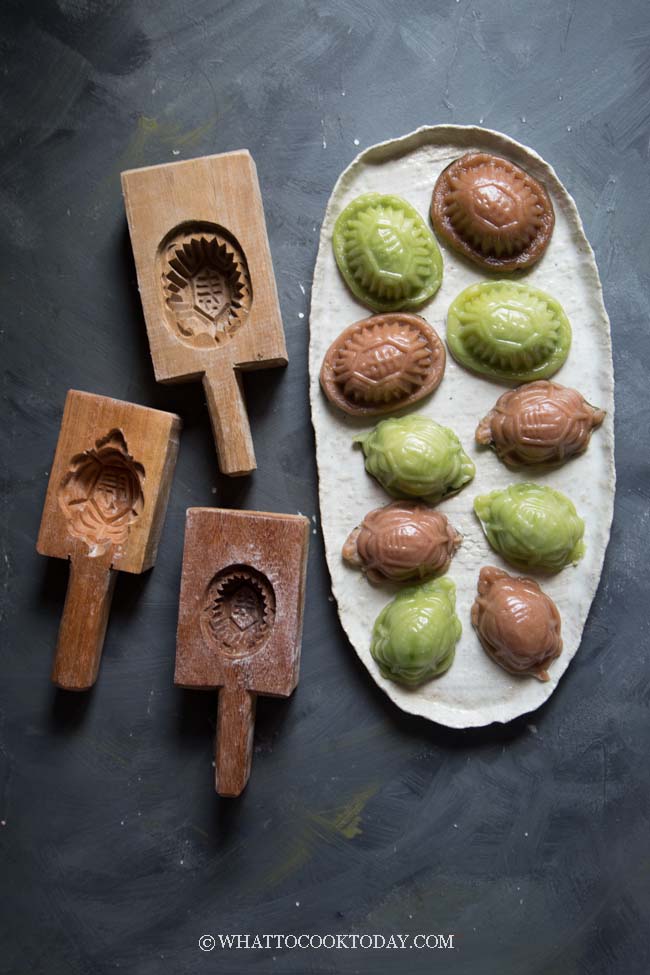|
Easy Ang Ku Kueh with Mung Bean Paste (Tortoise Kueh) – Natural Colors written by Marvellina Published: December 11, 2010Last Updated on July 17, 2021 11.4K
Learn how to make traditional ang ku kueh filled with homemade mung bean paste. This recipe is very easy yet it gives you that soft yet chewy texture. Ang ku kueh is made with natural coloring from beetroot juice and pandan juice. This post may contain affiliate links. Please read our disclosure policy.
I have been in the mood for tinkering in the kitchen and so I revisited this ang ku kueh today and made them again. My mom made red ang ku kueh few years ago for both of our kids’ one-month celebrations. I wrote more in details about Ang Ku Kueh and other tips about it in this Pumpkin Ang Ku Kueh post if you are interested to know about it. RECIPE IS EASY AND NO FUSSI think this recipe is much simpler compared to many others you’ll see out there. You don’t need to cook the doughon the stove and the ang ku kueh is made with mainly glutinous rice flour without any addition of sweet potato like in the more traditional recipe. The ang ku kueh is soft yet chewy, which I like. WHY YOU’LL LIKE THIS RECIPE1. I use natural coloring from beetroot juice for red and pandan juice for green
1. PREPARE THE DOUGH
Make a well in a center. Add few drops of food coloring if you don’t use natural coloring from pandan juice and beetroot juice. If you use pandan juice and beetroot juice, put them in a saucepan (separately) and bring them to a rolling boil
boiling beetroot juice for red color Pour the hot liquid into the center.
Use a rubber spatula to start stirring until it forms a crumbly dough
When cool enough to handle, use your hand to knead the dough into a soft, pliable and shiny dough.
Cover and let them rest for 10 minutes.
2. SHAPE THE FILLING
I believe you get the idea! Portion out the mung bean paste filling and roll them into balls for easier wrapping
3. WRAPPING Portion out the dough about into the size you want. Flatten them with the palm of your hand. Place the filling on the middle and bring all edge together and roll them into a smooth ball again
Dust the mold with some sticky rice flour to prevent sticking and gently knock off excess flour. I roll the dough ball into the flour thinly too.
Place the dough ball into the cavity of the mould. Slightly pressed it down as you stretch them out to fit the mould.
Knock the mold once or twice on a countertop (lined with some cloth to minimize banging sound) to dislodge the dough
Place individual ang ku kueh on a greased banana leave
4. STEAMING When the water in the steamer is boiling vigorously, place the ang ku kueh inside the steamer about 1/2-inch apart.
Lower the heat to medium and when you cover the lid, let it crack opens about 1/2-inch and steam for 10-15 minutes, depending on how big your ang ku kue. This is very important as it helps to maintain the imprints on the cake and to make sure you ang ku kueh is not flattened. If you steam them on high heat with all the steam trapped inside ,all the imprints will mostly be blurred and cake will expand to the side and flattened.
5. COOL DOWN Remove from the heat onto a plate and then brush with some cooking oil if you like. Let them cool down completely
That was what happened when I made it the first few times I made ang ku kueh. They came out blurred and stretched to the side. When the water in the steamer is boiling vigorously, place the ang ku kueh inside the steamer about 1/2-inch apart. Lower the heat t medium and when you cover the lid, let it crack opens about 1/2-inch and steam for 10-15 minutes, depending on how big your ang ku kue. This is very important as it helps to maintain the imprints on the cake and to make sure you ang ku kueh is not flattened. If you steam them on high heat with all the steam trapped inside ,all the imprints will mostly be blurred and cake will expand to the side and flattened. CAN I STILL MAKE ANG KU KUEH WITHOUT THE MOULD?If you don’t have the mold, don’t sweat it! You can just roll it into a ball and steam it as round balls. The Chinese love anything round too 😉 WHERE CAN I GET THE TORTOISE MOULD?If you are in Asia, most likely you won’t have a problem finding one. They are available in a shop that sells baking equipment and ingredients. If you are in the U.S., you can find one at Amazon, but there isn’t much selection.
Pumpkin ang ku kueh
I love it when you guys snap a photo and tag to show me what you’ve made 🙂 Simply tag me @WhatToCookToday #WhatToCookToday on Instagram and I’ll be sure to stop by and take a peek for real!
Prep Time 2 hours 30 minutes Cook Time 20 minutes Rest the dough 10 minutes Total Time 2 hours 50 minutes Servings 12 -15 cakes (with 50-gram mould) 4.8 from 6 reviews Prevent your screen from going dark Print Recipe Ingredients 0.5x1x2x For the dough: To make beetroot juice (if you want natural red color): 30 gr beetroot you can also use red dragon fruit juice 110 ml water For the filling: Others: Instructions To make beetroot juice: Place the beetroot and water in a blender and blend until smooth. Strain the juice if necessary to get a smooth juice Prepare the doughs: Mix the glutinous rice flour with salt, and sugar. Stir to combine. Make a well in a center. Add few drops of food coloring if you don't use natural coloring from pandan juice and beetroot juice If you use pandan juice and beetroot juice, put them in a saucepan (separately) and bring them to a rolling boil. I suggest boiling a bit extra, about 100 ml extra, in case you need more liquid later, Pour 250 ml of the hot liquid into the center, reserve the rest for in case you need it later. Use a rubber spatula to start stirring until it forms a crumbly dough. When cool enough to handle, use your hand to knead the dough and add the oil and continue to knead into a soft, pliable and shiny dough. Adds more water as needed to get to a soft pliable state. This is important to make sure your ang ku kueh stays soft after steaming later. Cover and let them rest for 10 minutes. The dough should feels soft and won't break if you knead it. Shaping the mung bean paste: The amount of the dough and filling depends on the size of your mould. I have 30, 50, and 60 grams mould. For example if I use 50-gram mould, I can portion 30 grams of dough and 20 grams of filling or 25 grams of dough and 25 grams of filling. I believe you get the idea! Portion out the filling and roll them into balls for easier wrapping Wrapping: Portion out the dough about into the size you want. Flatten them with the palm of your hand. Place the filling on the middle and bring all edge together and roll them into a smooth ball again Dust the mold with some sticky rice flour to prevent sticking and gently knock off excess flour. I roll the dough ball into the flour thinly too. Place the dough ball into the mold. Slightly pressed it down as you stretch them out to fit the mold. Knock the mold once on a countertop (lined with some cloth to minimize banging sound) and the dough will flop out of the mold. Place individual ang ku kueh on a greased banana leave Steaming: When the water in the steamer is boiling vigorously, place the ang ku kueh inside the steamer about 1/2-inch apart. Lower the heat t medium and when you cover the lid, let it crack opens about 1/2-inch and steam for 10-15 minutes, depending on how big your ang ku kue. This is very important as it helps to maintain the imprints on the cake and to make sure you ang ku kueh is not flattened. If you steam them on high heat with all the steam trapped inside ,all the imprints will mostly be blurred and cake will expand to the side and flattened. Remove from the heat onto a plate and then brush with some cooking oil if you like. Let them cool down completely Storing cooked ang ku kueh: They can be kept at room temperature (where humidity is low) for about 3 days. If you keep them in the fridge, you just need to reheat them in the steamer for 3-5 minutes, as the skin will toughen. But once reheated, they will be soft again The cooked ang ku kueh can also be kept frozen in the freezer for up to 3 months and they go from freezer to steamer and steam for 8-10 minutes or until heated through Storing uncooked ang ku kueh: Place them on a baking sheet not touching each other and place them in the freezer for one hour and then transfer to a freezer bag and push all the air out and seal the bag. They can be kept in the freezer for up to 6 months. When ready to steam, do not thaw. Steam over medium heat with the lid crack open about 1/2-inch and steam for 15 minutes or until heated through Did you make this recipe? how you like this recipe and consider rating it! Tag me @whattocooktoday I'd love to see your photos/videos on Instagram Recommended products:
Food Steamer
previous post Homemade fresh egg noodles (cut by hands)
next post DEER MEAT STIR-FRY 20 comments
Nicole September 19, 2021 - 11:08 pm Hey Marvellina, I’m just in the process of making this recipe (but with black sesame and peanut filling) and the dough is indeed soft and pliable but super sticky. Is this right?
Marvellina September 20, 2021 - 9:15 pm It shouldn’t be super sticky. If it is, you can try to dust with a bit of glutinous rice flour, but it shouldn’t be so sticky that you need to add too much extra flour.
Crys July 17, 2021 - 6:09 am Hi, I love your recipes! I just made this and looved it, so good! Just one concern, I followed the recipe exactly but the skin becomes harder soon after it’s steamed (maybe an hour later). Is this because this recipe does not use sweet potato? or maybe I did something wrong 😅 Would love any input in how to make it stay soft? 🙂
Marvellina July 17, 2021 - 10:07 am Hi Crys, I just made this same recipe again too a few days ago. Mine actually stays soft at room temperature the whole day. They do get hard after refrigeration. It shouldn’t be because of not using sweet potatoes. You want to make sure the water is boiling hot to “precook” the dough and add a bit water as needed if you feels like the dough is dry. The dough should feels soft and very pliable. That’s the key to have a ang ku kueh that stays soft. I hope this helps.
saska February 5, 2021 - 9:41 pm where are we using the 40g oil?
Marvellina February 5, 2021 - 10:29 pm After you pour the hot liquid in and when it’s cool enough to handle, you knead the dough and gradually add in the oil and continue to knead into a soft, pliable dough. I’ve updated the recipe to reflect that.
Pollyn Lee April 27, 2020 - 2:10 am Hi Marvellina, thank you for sharing the ang ku kueh recipe. I made it today and it turned out to be very chewy and soft. My husband and i just enjoyed it so much we almost finished it all in one go. Your method is quick and easy. Thank you again and best wishes to you.
Marv April 27, 2020 - 5:27 pm Hi Pollyn, yay!! I’m glad to know that you guys enjoyed it. I like this easy method too. I always thought making ang ku is a complicated task (well, not this recipe anyway). Thank you for trying and for letting me know! Cheers!!
Lucy October 30, 2019 - 5:01 pm Thank you for your recipe. I love your blog as it gives clear instruction but the kueh ku size is bit too small. I lIke mine to be bigger so as to have a good bite. I only try new recipes when I’m overseas in a foreign country. Thanks for your blog I perchance saw it. I will try your kueh kueh recipes like onde2 n dada2 and will let you k ow the result.
Marvellina October 30, 2019 - 8:52 pm Hi Lucy, 2 Leave a Comment This site uses Akismet to reduce spam. Learn how your comment data is processed. (责任编辑:) |

